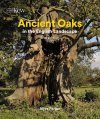By: Aljos Farjon(Author), Martyn Ainsworth(Contributor), Keith Alexander(Contributor), Pat A Wolseley(Contributor), Lawrence Banks(Foreword By)
356 pages, 190 colour photos, colour & b/w illustrations, colour tables
![Ancient Oaks in the English Landscape Ancient Oaks in the English Landscape]()
Click to have a closer look
About this book
Customer reviews
Biography
Related titles
About this book
England has more ancient native oak trees than the rest of Europe combined. How did that come about? The reasons are all historical, and nothing to do with climate or soil factors. This story goes back to the Norman conquest of England in 1066. They created Royal Forests, chases and deer parks, where only the nobility could hunt or keep deer and it was forbidden to cut the trees. This was, if you like, an early form of nature conservation, but for the sake of privileged hunting.
Preservation of these oaks further continued through a combination of private ownership of thousands of parks, conservatism of the landowners, overseas timber availability and the absence of ruining wars on the English landscape; the majority of which had been confined to the continent. Modernisation of forestry in England only took hold after 1920, and by that stage too late to destroy all of the old and worthless hollow trees. In contrast, modern forestry was introduced on the continent at least 200 years earlier, with devastating results for ancient trees. We owe the ancient oaks to all these circumstances which created a unique 'population' of ancient oaks, highly important for biodiversity and an asset unique to England.
In this second edition of the bestselling and award-winning book, Aljos Farjon combines history with science and tells the story of how ancient oaks have shaped the English landscape over the past 1000 years. The two native species of oak, pedunculate oak (Quercus robur) and sessile oak (Q. petraea) are among the longest living trees in England. And using data made available by 'citizen science' (data gathered by volunteers across the country) Aljos explains this remarkable situation by giving detailed evidence, enhanced with beautiful images of these stunning oaks as well as graphs and maps. Since publication of the first edition in 2017, more than a thousand very large ancient oaks have been recorded in England, resulting in updated statistics included in this new edition, and new and important sites described.
Customer Reviews
Biography
Aljos Farjon is a botanist of world renown for his work on conifers, on which he has published 11 books and more than 100 papers and articles, and has received several international awards. He carried out much of this work whilst on the staff of the Royal Botanic Gardens, Kew and continued with it in retirement as an Honorary Research Associate at Kew. He has been actively involved in conservation, and has led the IUCN Red List assessment of all conifer species twice. Continuing his passion for trees, Aljos has shifted his research interests to the extraordinary wealth of ancient oaks in his adopted country, England.
By: Aljos Farjon(Author), Martyn Ainsworth(Contributor), Keith Alexander(Contributor), Pat A Wolseley(Contributor), Lawrence Banks(Foreword By)
356 pages, 190 colour photos, colour & b/w illustrations, colour tables
"England’s ancient oaks are awesomely old and individually distinctive. [...] Aljos Farjon, a tree specialist from Kew, developed an enthusiasm, if not an obsession, with them in retirement, visiting a large number of individual trees, analysing the records in the Ancient Tree Inventory and investigating the history of the places they inhabit. The results have now been expressed in a substantial compendium, illustrated by numerous portrait photographs of individual trees, which aims to explain how old they are, how they survived, why there are so many more in England than elsewhere, and why and how we should preserve them. [...] This book is the child of diligent enthusiasm and a delight in detail, and therein lie its strengths and weaknesses. For those who revel in facts about individual sites and trees, often in the form of descriptive inventories, it has much to offer, and many will appreciate the numerous photographs and the opportunity to relive their visits to the most noteworthy trees. It succeeds in what it set out to do. But it also, I think, missed an opportunity. Given the space available and the high production qualities, this book could have delighted more than those already fascinated by veteran oaks. Rather than rehearse so much marginally relevant detail of so many sites and individual trees, it could have been a more rounded and readable account. It could have included those topics that Farjon explicitly excludes, namely the numerous stories associated with surviving and long-gone oaks, their symbolism, the uses to which they were put, and even the ancient oaks that survive as coppice stools. And it could have been more directly and comprehensively persuasive about why they are worth looking after. The oaks that survive have meaning while they live, but they and their historical associations will eventually survive only as memories and archives. Even if we have the centurieslong patience to develop them, any new ‘ancient’ oaks will possess a different meaning, even if they perpetuate the habitats."
– George Peterken, British Wildlife 30(1), October 2018


































